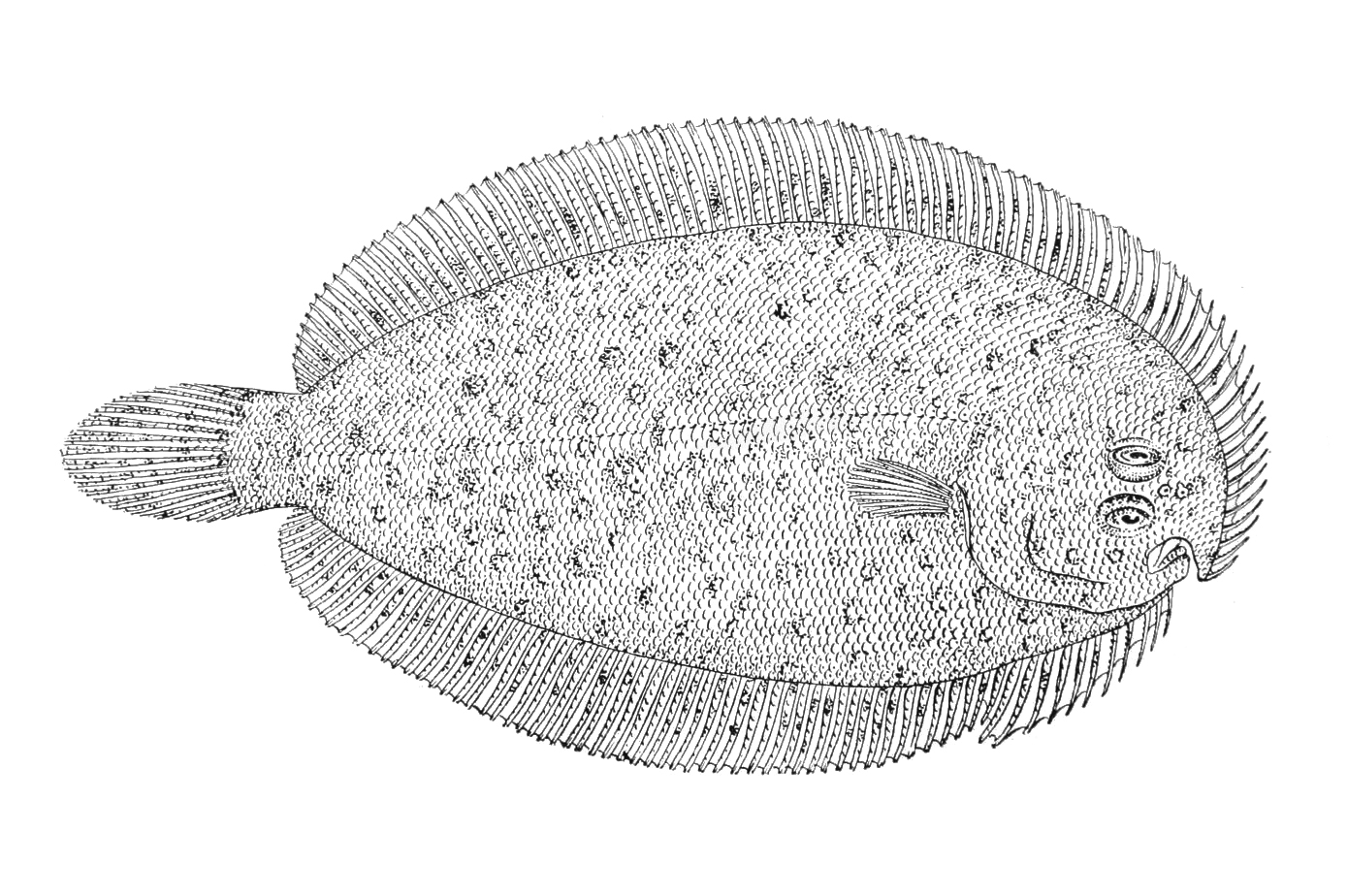Largescale Flounder, Ammotretis macrolepis McCulloch 1914
Other Names: Large-scaled Flounder

Illustration of the holotype of the Largescale Flounder, Ammotretis macrolepis. Source: Fig. 9, in McCulloch (1914) Biological Results Endeavour 2(3):77-165 / Biodiversity Heritage Library. License: CC by Attribution
Summary:
A small brownish flounder often with darker speckles on the head and body, and a whitish underside.
Cite this page as:
Bray, D.J. & Bradley, E. 2022, Ammotretis macrolepis in Fishes of Australia, accessed 25 Apr 2024, https://fishesofaustralia.net.au/Home/species/984
Largescale Flounder, Ammotretis macrolepis McCulloch 1914
More Info
|
Distribution |
Northeast of Flinders Island, Bass Strait, Victoria, to south of Encounter Bay, South Australia, and possibly west to Spencer Gulf, at depths to 80m. Inhabits sandy/muddy areas on the continental shelf. |
|
Features |
Dorsal fin 79-90; Anal fin 51-59; Pelvic fin right 12, left 5; Caudal fin 14. Body deep (46-57% SL); head moderately small; eyes small, adjacent to each other; snout extended into a hook-like process projecting downwards in front of small, oblique mouth. Scales ctenoid, very small, rather firmly attached on both sides; lateral line present on both sides; almost straight, ending posteriorly on head. Dorsal, anal and caudal fins separate; dorsal fin arising on tip of snout, without elongate anterior rays; caudal fin rounded; right pectoral fins only slightly longer than the left; pelvic fin on eyed side (right side) with an elongate base. |
|
Size |
A small species, reaching only 10cm TL. |
|
Colour |
The eyed side (right side) is pinkish with numerous small dark grey ocelli (an eye-like spot with a pale marginal ring) on the head and body, sometimes dark speckling, and fins dotted with dark grey dots on the fins, and a whitish underside. |
|
Fisheries |
Taken as bycatch in prawn trawl fisheries. |
|
Etymology |
The specific name macrolepis is from the Greek macro- (= large) and lepis (= scale), in reference to the relatively large scales of this species compared with those of Ammotretis tudori (a synonym of A. lituratus). |
|
Species Citation |
Ammotretis macrolepis McCulloch 1914, Biological Results of the Fishing Experiments carried on by the F.I.S. Endeavour 1909-1914 2(3): 125, fig. 9. Type locality: Flinders Island, Bass Strait, Tasmania, 40 fathoms. |
|
Author |
Bray, D.J. & Bradley, E. 2022 |
|
Resources |
Largescale Flounder, Ammotretis macrolepis McCulloch 1914
References
Gomon, M.F. 1994. Family Pleuronectidae. pp. 851-859, figs 753-760 in Gomon, M.F., Glover, C.J.M. & Kuiter, R.H. (eds). The Fishes of Australia's South Coast. Adelaide : State Printer 992 pp. 810 figs.
Gomon, M.F. 2008. Family Rhombosoleidae. pp. 810-816 in Gomon, M.F., Bray, D.J. & Kuiter, R.H. (eds). Fishes of Australia's Southern Coast. Sydney : Reed New Holland 928 pp.
Last, P.R., Scott, E.O.G. & Talbot, F.H. 1983. Fishes of Tasmania. Hobart : Tasmanian Fisheries Development Authority 563 pp. figs.
McCulloch, A.R. 1914. Report on some fishes obtained by the F.I.S. Endeavour on the coasts of Queensland, New South Wales, Victoria, Tasmania, South and South-Western Australia. Part 2. Biological Results of the Fishing Experiments carried on by the F.I.S. Endeavour 1909-1914 2(3): 77-165 figs 1-15 pls 13-34 See ref at BHL
Munroe, T.A. 2021. Ammotretis macrolepis. The IUCN Red List of Threatened Species 2021: e.T158644441A158673992. https://dx.doi.org/10.2305/IUCN.UK.2021-2.RLTS.T158644441A158673992.en. Accessed on 14 January 2022.
Norman, J.R. 1926. A report on the flatfishes (Heterosomata) collected by the F.I.S. Endeavour, with a synopsis of the flatfishes of Australia and a revision of the subfamily Rhombosoleinae. Biological Results of the Fishing Experiments carried on by the F.I.S. Endeavour 1909-1914 5(5): 219-308 figs 1-15 See ref at BHL
Norman, J.R. 1934. A Systematic Monograph of the Flatfishes (Heterosomata) Psettodidae, Bothidae, Pleuronectidae. London : British Museum Vol. 1 459 pp. 317 figs. See ref at BHL
Sakamoto, K. 1984. Interrelationships of the Family Pleuronectidae (Pisces: Pleuronectiformes). Memoirs of the Faculty of Fisheries, Hokkaido University 31(1,2): 95-215 figs 1-51


